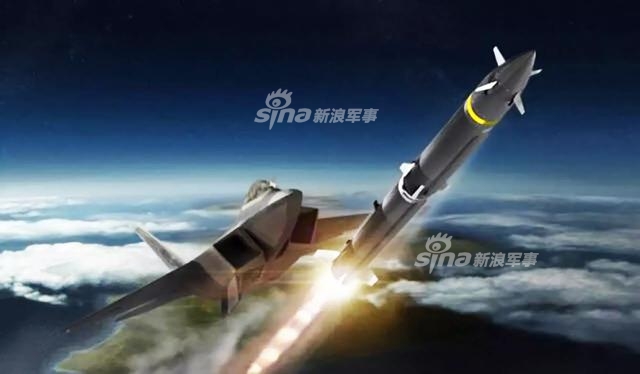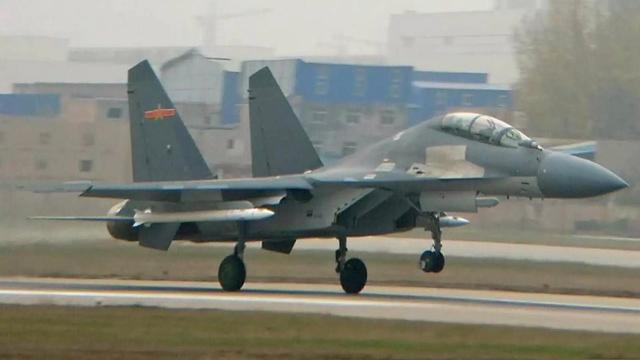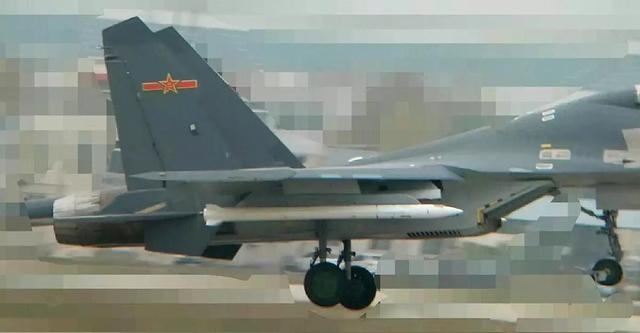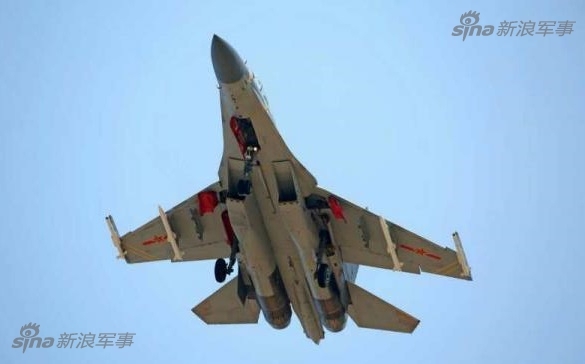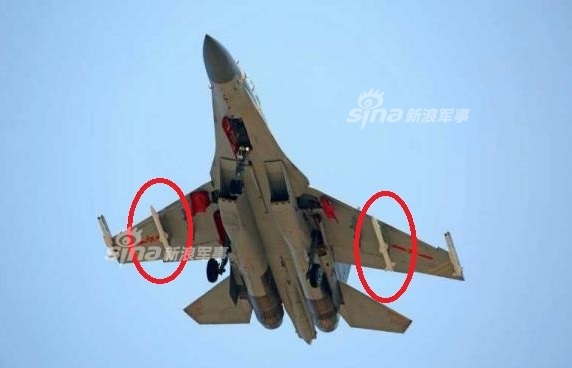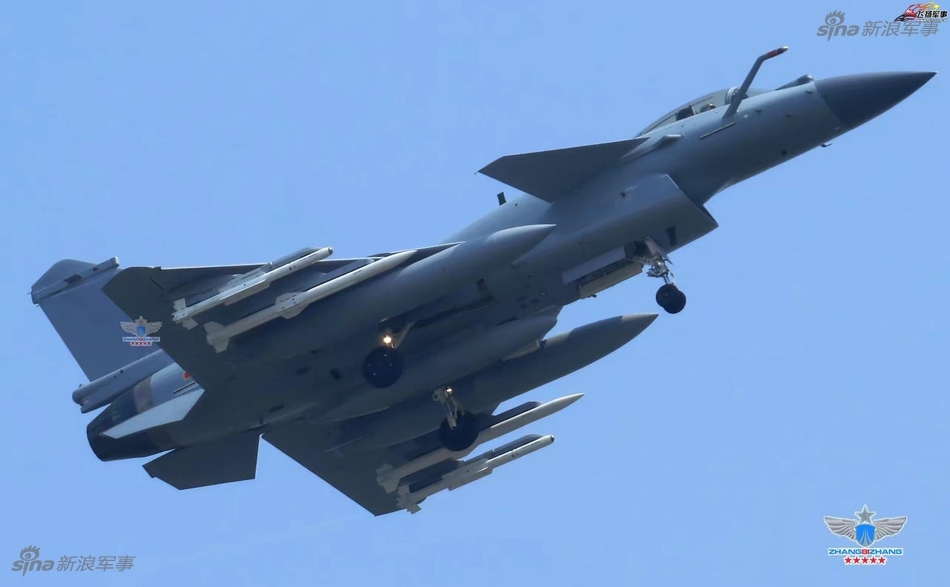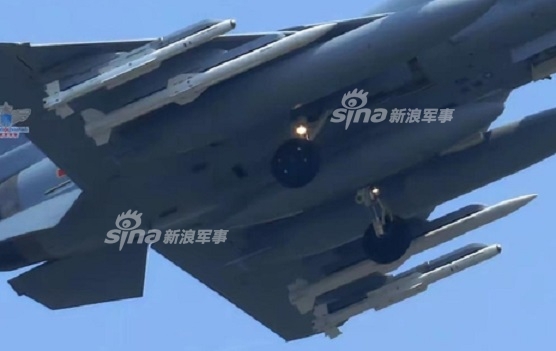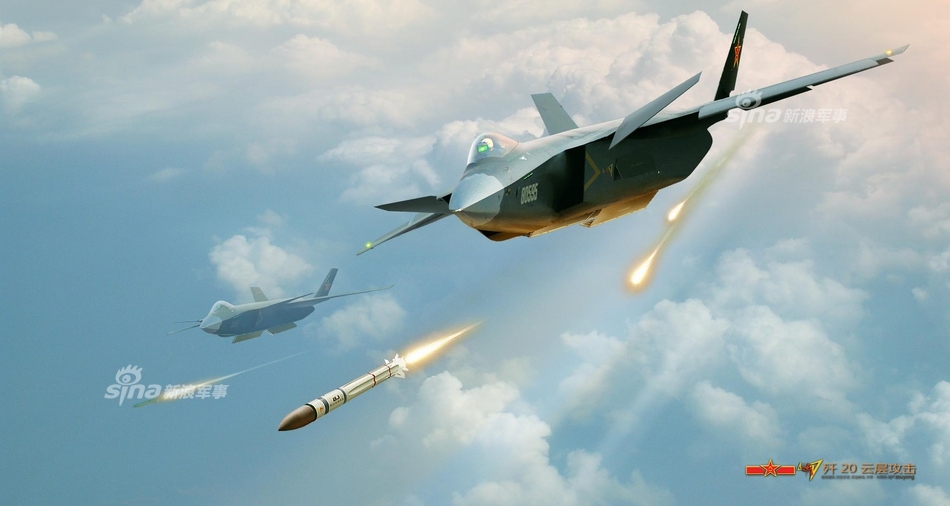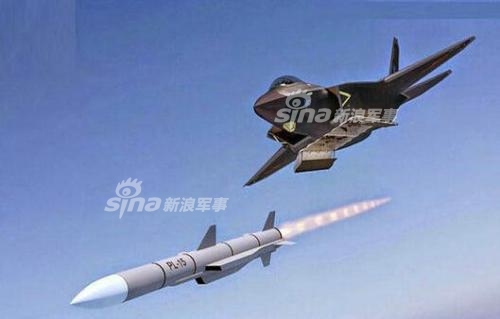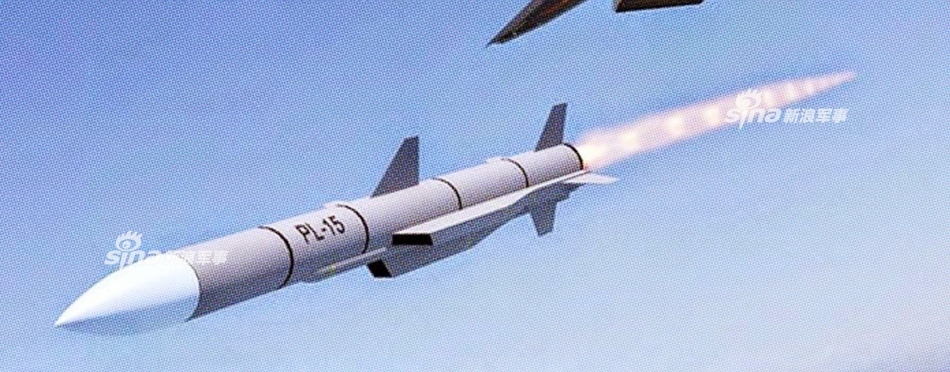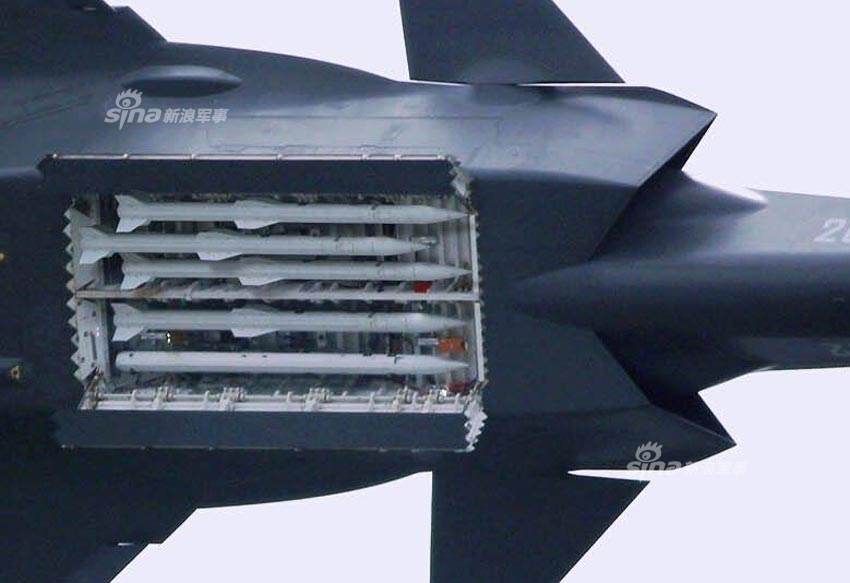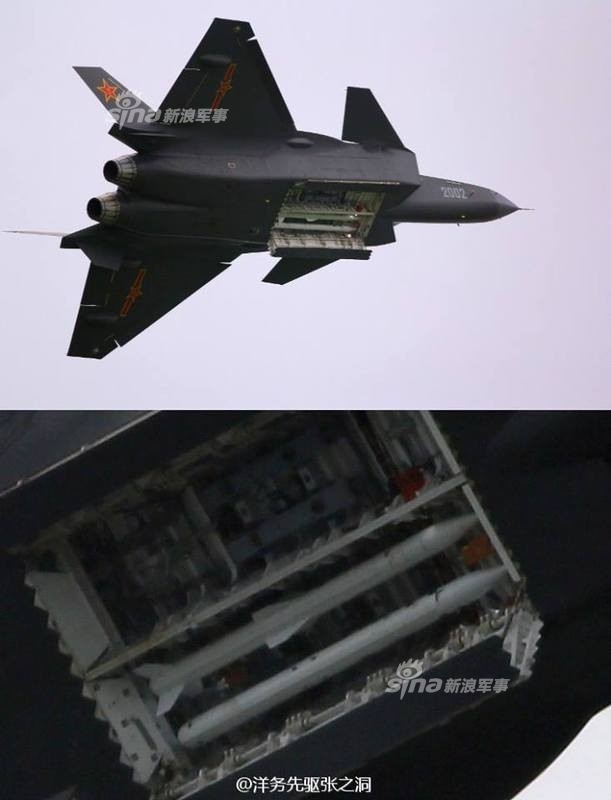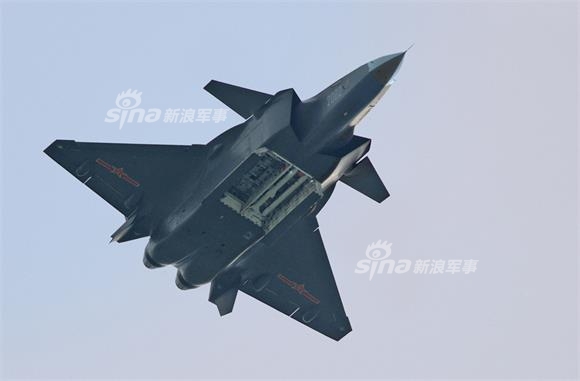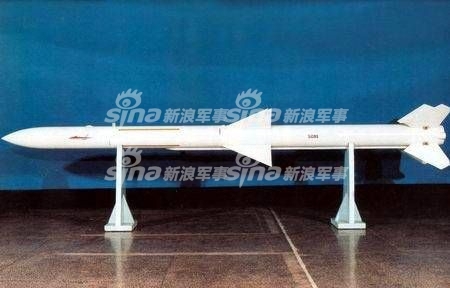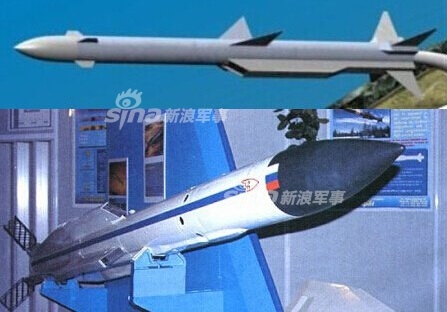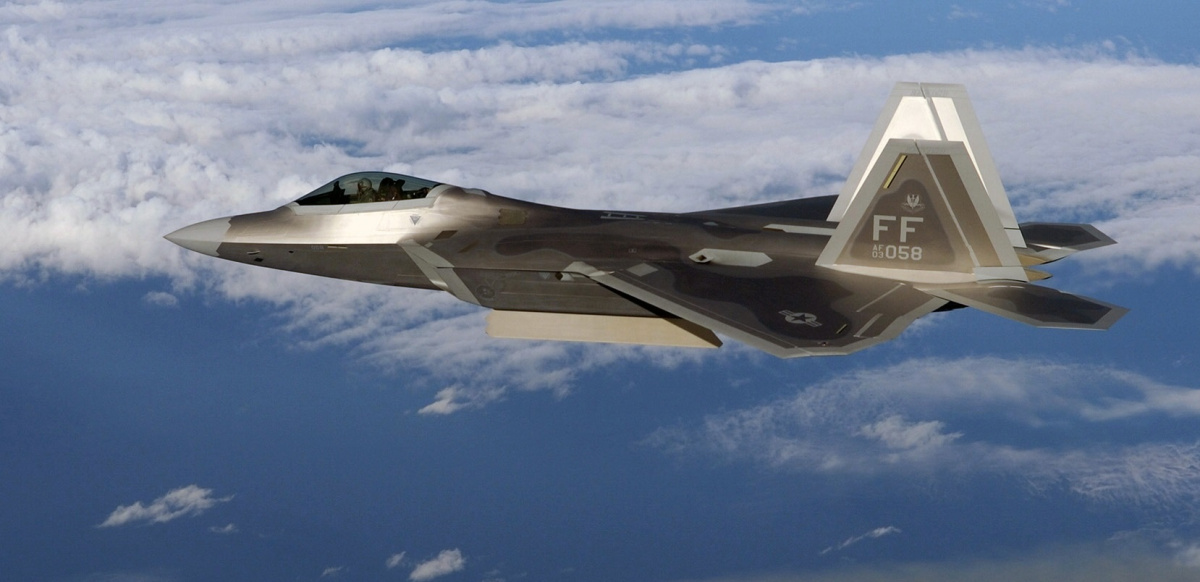So anymore talk cock about
Then take out China little by little. First thing first, the SCS... island chain around it. Enforce a no fly zone for ship and aeroplane.
Plot the downfall of Yuan.
What's the point of having a longer range that the US bombers when it is clear that the chinks' bombers will be shot down before they fly past Taiwan or Japan?



Kong langjeow wei



Don't you even dare to mention Chinese copied the West and Russia.
After all Chinese invented gunpowder and rockets and guns which the Mongols took with them to spread good news in Russia and Europe when luckily for them,
the death of Ogodei the Khan in Mongolia on Dec 11 1241 brought back the Mongols to elect the next Khan when all the armies of Europe were destroyed and annihilated.
Only then the West knew of gunpowder and rockets and guns that they then copied.
China then recently improved on all of that to the point their missiles a paradigm shift above USA and Russia.
And no crap talk about China needing to copy the fucking Terrex of Stinkapore.
Part of China missile lead came from their research and using of N15 propellant while the USA and Russia still uses the Trident D-5 propellent.
Also the advances and lead of China now in the guidance and radar subsystems and anti-jamming integrated into complete networks to bring the missiles good news to their targets.
And Chinese design in integrating all above together and industrial productions to churn out thousands of the various missiles.
I still hope not for war between China and USA. After all, as Sun Zi pointed out in his ancient book of warcraft,
"The supreme excellence is to subdue the armies of your enemies without having to fight them."
But if push comes to shove, I do not want to see China losing.
USA knows that now. So anymore shit talk Kong langjeow wei about
Then take out China little by little. First thing first, the SCS... island chain around it. Enforce a no fly zone for ship and aeroplane.
Plot the downfall of Yuan.
What's the point of having a longer range that the US bombers when it is clear that the chinks' bombers will be shot down before they fly past Taiwan or Japan?


 www.bestchinanews.com/Military/5680.html
Foreign media shocked China air missiles have been achieved across the board across the board
www.bestchinanews.com/Military/5680.html
Foreign media shocked China air missiles have been achieved across the board across the board
2017-01-16 16:10:46 395 ℃
Author 92JM
What is "across the board"? "Across the board" is covering all categories of air-to-air missiles, short-range, medium range and long-range, ultra long range; it also refers to the various key indicators of air-to-air missile. "Crossing" refers to the performance indicators in the ranks of the world's advanced, while some are beyond the world leading level. The following is the most advanced
Four kinds of air to air missileFrom is a short-range combat missile interceptor from PL-10, PL-12, PL-15 and remote interceptor, ultra long distance missile. Figure out the difference between the latter three appearance, why PL-15 is not PL-12's wing folding version? After the text will explain.
The following one by one analysis the advanced four missiles, the first to see the close combat missile. The table below is our army and the world representative air-to-air elastic energy comparison. From the recent news that picture PL-10 has been our main force fighter, 2016 Zhuhai airshow PL-10E is export-oriented, although there is no disclosure of accurate data, but the chief engineer in interview pointed out it
Has entered the four generation of the world's advanced ranks.
PL-10 is chosen
Larger diameterThat is a summary of the combat effectiveness of air-to-air missile is presented after the beauty of europe. Close combat missile requires high mobility, the "mobility" is not only the national leaflets marked on the "maximum overload", it is the largest segment of the first motor overload power can achieve. The small size of the combat missile, usually only a dozen seconds of power, followed by non power flight, the speed is slow, the corresponding mobility decreased significantly. So the length of combat missile force is a key measure of performance, because in order to get rid of air combat missile tracking, the enemy will continue doing complex maneuvers.

If the power section combat missile is very short, in a high speed maneuvering reentry, fell sharply, with a corresponding decrease in mobility, it is easy to get rid of the enemy; at the same time, in the power section "rudder" has no effect on mobility, canard or movable tail, which is the PL-10 tail select (Butterfly) reason obtrapezoid.
Compared with most combat missile is triangular, trapezoid tail, obtrapezoid not only take into account the attachment section (due to resistance of non motorized tail area and torque equivalent), longer in maneuver (larger lateral tail). From the figure we can see that in the early development of PL-10, the tail is trapezoidal,
Later changed to obtrapezoid. Show design staff said: PL-10 has a high mobility (60+G), reached the maximum angle of attack
Limit of aerodynamic designAt the same time, the maximum off-axis emission angle is the three generation
several times.
In addition PL-10's wing is a long strip of strake wing, both to meet the requirements of large range of lift, and improve body structure of high strength maneuver, against four generation machine supersonic maneuver, while also reducing the shell structure meet the high strength to weight the maneuver. So that the European "rod" Close play is not tall, it needs at a certain angle of attack missile flight, at the expense of the cost of range and mobility, is not the mainstream of development, the United States and Russia have no choice is justified. The larger diameter and aerodynamic layout of the choice, so that the PL-10 has a greater range, and in the second half of the range has a higher mobility, the combination of both to ensure that the PL-10 in the four generation fighters, with
The most effective attack range(25Km).
Another advantage of PL-10 is that the infrared staring imaging seeker
256 X 256Pixel, effective rate reached 99%, chief engineer said its stronger anti-jamming capability and has anti stealth ability; the latest models AIM-9X and AIM-132 are in Europe
128 X 128This means that the PL-10 imaging resolution is higher, you can lock farther or infrared signal smaller targets. Secondly, chief engineer said: as the PL-10 diameter larger, the quality of its warhead (15Kg) than other short-range combat missile 50 - 100%, the maximum radius of destruction.
The PL-10 is the same as the AIM-9X, with 8 wide beam laser proximity fuze windows behind the warhead to make the warhead more accurate. The above three points of superposition effect makes PL-10
Attack damage performance greatly increasedPlus, with further effective range and after higher mobility, PL-10 has close combat missile super performance.
The method of "Mika" missile of larger diameter, mainly in order to close from the bomb and bomb using the same warhead and the power section, because the technology of the time limit, the performance is still less than PL-10. Although the United States AIM-9X high technical level, but limited to the smaller diameter, effective range, the quality of the warhead and the number of infrared imaging elements are less than PL-10.
Then talk about the medium range interceptor, the middle range is also known as super range interceptor. The range of flight speed and power range directly affects the effective interception range, and the range of the active radar seeker is another key factor. These two indicators farther, means that the interceptor "aircraft not escape" more. Some of the interceptor data label range over one hundred kilometers, it is only the maximum flight distance of the missile, the flight speed is very low, basically no mobility.
The actual interception range of the interceptor is much shorter than the maximum range, and the escape zone is smaller. No escape zone is divided into head-on and chase, the former than the latter in 30%. It can be known from the following table
China PL-12 these indicators are tied with the United States AIM-120C first70, the effective range of 80Km, can not escape from the head-on 45\/ chase 35Km, were better than the rest of the world from the interceptor. Only the AIM-120C of the bullet diameter and the projectile weight is smaller, the off-axis emission angle is slightly larger, but this does not affect the PL-12 to become the world's outstanding super visual range interceptor.
The reason why the PL-12 has a higher speed, but also has a far effective interception distance, thanks to
Double pulse solid rocket. The solid phase of the solid rocket in the early interceptor was the same as that of the entire fuel, that is, the burning rate of the fuel from the beginning to the end is the same. So there is a problem, the initial period of the missile in order to accelerate the large acceleration, namely combustion velocity reaches a certain speed; if it is still the same combustion speed, fuel will soon burn, missile early into the reentry, flying slowly lost interception.
If it is a double pulse solid rocket, that is, solid fuel is divided into two sections, the first part of the burning speed, reaching a higher speed after the burning speed is slow, the thrust is to maintain a constant speed flight. The same amount of fuel using dual pulse, the missile can make the power flight longer, higher speed and higher maneuverability, natural missile interception distance and the effective escape zone is farther. See the screenshot below, the double pulse is the two ignition function, there is a gap between the one or two pulses, according to different requirements of the design of different baffle openings layout, shape and size.

In order to increase the interception distance, the military powers in the middle range interceptor, based on the development of a further range of interceptor. Before the advent of dual pulse solid rocket technology, some only increase the projectile power segment diameter and length (such as AIM-54), there is also a way to increase the booster rocket (such as Russia's AA-10M), then using the oxidant of ramjet engine is the advantages of air, the development of solid rocket ramjet engine +. Such as the Russian R-77 improved and European "meteor" (see below).
According to the data of a few years ago Chinese airshow, also had remote interceptor scheme of ramjet (
PL-21)However, this scheme was abandoned because of the impact of the heavy overload on the normal operation of the ramjet engine, which was replaced by the PL-15. The following puzzle is PL-12 (top) and PL-15 (middle and lower). The reason that hung in the f -20 test machine (2002) in the magazine is remote abdominal missile interceptor, not from the interceptor PL-12 fold (or shrink) wing version, but a substantial increase in new missile range,
For three reasons:
(1)If the missile is the same length as the PL-12, according to the proportion of the following figure, the bomb body diameter than PL-12 10 - 15%;
(2)Installation rack from setting version of F -20 magazine 2X5 hole analysis, magazine can shape mount to three PL-12, while in the picture of 2002 machine hanging spring picture, body length is close to the length of the magazine, is clearly not the glyph hanging three;
(3)A magazine paper shows that annihilates -20 gate length is 4.5 meters, the cylinder wall length is about 4.3 meters, two missiles are "almost of indomitable spirit" in magazine, then this type of missile
Not less than 4 metres in length, and the length of PL-12 is 3.85 meters.
The first four missiles in the table below are from China, Russia and the United States
Long-range interceptorThe United States of America
AIM-54Although the maximum speed of 5M., but because it is not a double pulse solid rocket, in the second half of the flight speed slow mobility is poor, poor interception effect, coupled with heavy body has retired. Russian
AA-10MThe rocket, the actual effect is not bad;
RVV-AE-PDThe ramjet engine, although appeared in the show, but now there is no service.
China's PL-15 uses dual (multi) pulse solid rocketWith a smaller diameter, 200Km range, not only can be in the four generation machine magazine mounted world only distance interceptor, or F -11B, f -15, -16 and PL-15 is used to kill the sword
Bidirectional data link. Above (below) is f -11B mount PL-15.
The last three in the table are Chinese
Ultra long range interceptorRussia, Russia
R-172,
RVV-BD. From the recent analysis of the image appears on the Internet, China's ultra long range interceptor large length to diameter ratio and there is no main wing, flight resistance is small, but also a multi pulse solid rocket, so far (400+Km). It is a high ballistic flight path, intercept in climb, cruise altitude and dive section, hollow and terminal thrust is different. It is concluded that the choice of ballistic trajectory and multi pulse technique is better than that of the same kind of missile in the missile.

From the pictures on the Internet, China this ultra long-range interceptor is hanging in the f -16 wing, three generation fighter radar cannot be found and lock out to 400+Km, then this is how to intercept missile guidance? The actual carrying machine is just one combat system, we know that air marshals 500 effective detection distance is 470Km, and there are strong functions of satellite communication, the missile attack is a major target enemy aircraft, refueling machine this kind of poor mobility and slow speed.
By the early warning of F -16 emission over long distance missile midcourse guidance instruction implementation is feasible. AIM-54 retired, the United States currently does not have such a long-range interceptor PL-15, there is no such ultra long-range interceptor. So if the United States and China in the future air combat, we have more than a U.S. air strike early warning tactics, its early warning aircraft can only hide in the distance.
When the early warning system of other machine or the army found the enemy detection equipment, f -16 emission over long distance missile, by two-way broadband data link AWACS via satellite, issued guidance commands to the missile. Why is it via satellite relay communication? Because the (on) you can see a convex block and projectile of different colors in the air above the warhead, we can see that the satellite signal for different types of guided Ground Attack Munitions, this device is in the same position, it is a satellite signal receiving antenna. Guided by the satellite command signal, the aircraft flew to a distance of dozens of kilometers away from the target area, and the active radar captured the target signal. The jigsaw puzzle (below) is the schematic diagram of the missile flight path and the segmented guidance.
Readers may have three questions:
(1)This ultra long range missile will not be mentioned in the previous version of the PL-15 does not have a trapezoidal main wing? No, in addition to the multi warhead satellite signal receiving antenna if carefully controlled, the same aircraft annihilates -11 family, this type of missile projectile, PL-15 longer than larger diameter.
(2)Compared with PL-15, the projectile is not a lot of increase, why the range can be doubled? First, the use of high ballistic, high-altitude air thin resistance is small, far more distant than the hollow flight. 'mount Airshow
CM-400Air to ground missile,
Condor 400Long-range rockets are also using high ballistic range is much larger than the same. Two is the use of solid fuels this special missile: we know that the world advanced strategic ballistic missiles are used N15 high-energy solid fuel, solid fuel N15 is reported the highest energy and the best overall performance, suitable for wall pouring, but N15 fuel is expensive and not generally used for tactical missile.
The following is a paper "N15 class high-energy low characteristic propellant in tactical missile engine application research" screenshot, the article introduces
60%N15 blended fuelCost reduction can be used for tactical missiles. This thesis published many years ago mentioned tactical missile using the mixed fuel, four have been shooting all the success, so there is reason to believe that it can be used for ultra long range interceptor.
In addition, solid propellant in addition to fuel and oxidizer, many years ago, another paper also talked about China is developing
HNFOxidant, specific impulse ratio of existing oxidant
Upgrade 30%. Last year, Beijing Institute of Technology news network has a message, the school developed the energetic materials
CL-20As the main oxidant of the highest energy solid propellant in our country, our country's solid rocket propulsion capability has been greatly improved, and it has become a dazzling contribution to the field of aerospace power. Dual fuel and oxidizer performance, coupled with the use of high trajectory, creating a super range of this type of missile, with the support of the combat system, will form an effective threat to the u.s..
Ultra long distance missile can not only by AWACS in remote guidance, but also by the f -20 stealth UAV, guidance, the so-called
"A radio B guide". This requires a B machine with self networking broadband two-way data link system, because the three generation of the Link16 data link system is the weapon platform and the early warning machine connected, the platform can not self networking. Four generation machines are available
Broadband bidirectional data link system (IFDL) for Ad Hoc Networks.
The -20 antenna has six fuselage width data chain. F -20 by stealth performance, can be in the distance early warning aircraft closer to enemy airspace, and directional emission signals (highly secretive). The rear launched over long distance missile using inertial guidance and the -16 Instruction Guided climbing and cruising altitude, the f -20 issued a directive to subduction segment and hollow guidance to search, to capture the target missile and return data, using the f -20 super cruise function quickly from the missile attack, to the enemy aircraft, refueling machine.
Super distance interceptor to play Jones the efficiency of searching and tracking performance of warhead active radar is also crucial. It is not only related to whether the search and target in the far distance, also relates to contact machine before the distance, find the target distance farther, B guide machine more safety. The following screenshot is introduced years ago in China developed the antenna diameter
300mmThe Ku band of the active phased array antenna, the antenna array consists of
Eight hundred and thirty-twoSingle unit transmit power
Two hundredMW, array surface division12
The digital beam forming ability can be achieved, while the edge searching and tracking can be realized.
with
Gan
As the core of the microwave components are promoting the third revolution in the development of radar, which is mainly reflected in the increase in transmission power, reduce the size and weight. The same area increases the antenna detection distance77%
At the same transmission power, the number of the transmitting unit is beforeOne-tenth
It is possible to provide the technology for the small size of the antenna and the detection of the missile.
In recent years, our country in the phased array antenna components of raw materials technology is advancing rapidly, the following figure shows that China in the world for the first time successfully developed X band continuous wave power output
119W Gan (GaN) power HEMT
The detection distance, active phased array antenna which makes the components increase, can be ultra distance interceptor in dozens, even hundreds of kilometers away, and provide technical support for the big target this warning machine.
In summary, PL-10 is the world leading level in close combat missile, PL-12 in distance interceptor is tied for first, in remote and ultra long-range interceptor, Chinese is the champion in the world, so
Our air to air missiles have been formed across the board
Provide, both long and sharp sword for the active of the three generation machine and coming into the column of the four generation machine, to provide equipment support for the construction of the world first-class air force of pla.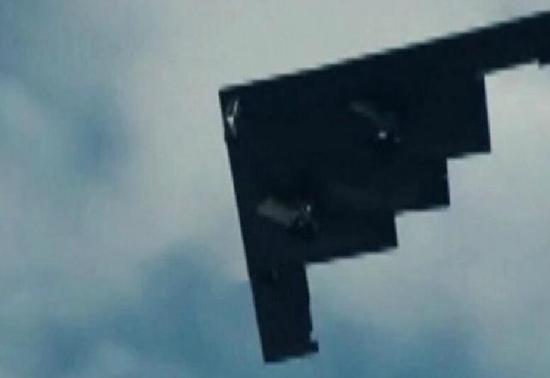 资料图:隐形轰炸机
资料图:隐形轰炸机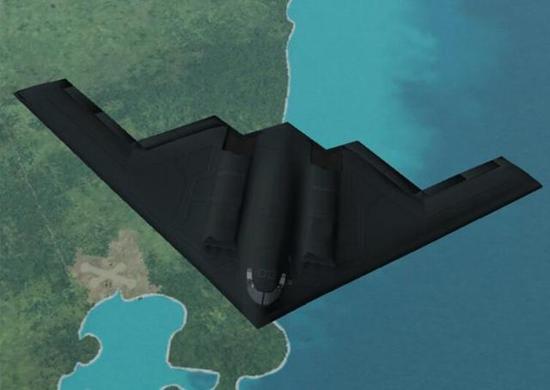 资料图:隐形轰炸机
资料图:隐形轰炸机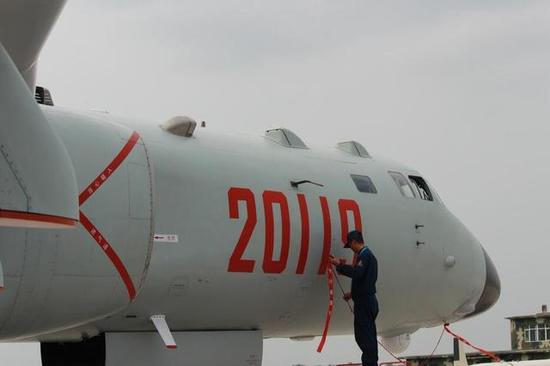 轰-6
轰-6



